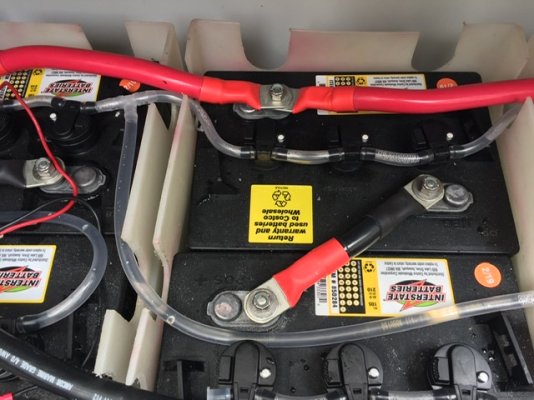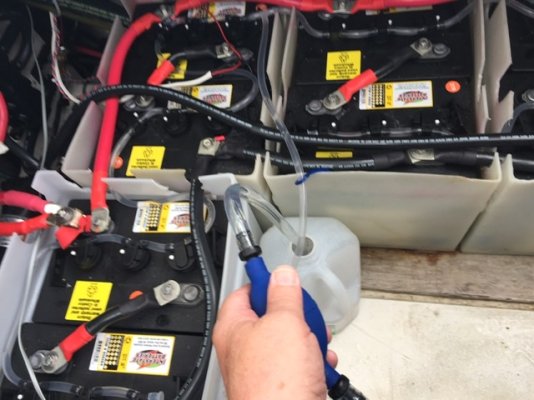Jmreim
Senior Member
- Joined
- Jan 7, 2019
- Messages
- 179
- Location
- USA
- Vessel Name
- Boundless
- Vessel Make
- 2013 North Pacific 43'
Power needs on my boat are fairly simple. When anchored we use lights (LED), fridge, light use of water pump for sink & toilet and perhaps charging some devices (iPad/iPhone). No genset so no AC or hot H2O heater. We do have an inverter and might use the microwave for coffee/tea in the morning.
The boat currently has 2 8D and 1 Group 31 battery. They all appear to be about 8 years old (the boat was new to me last Nov) and seem to be failing. I'm no expert and trying to learn all I can about battery types and configurations.
The yard has recommended replacement with the same configuration (2 8D and 1 Group 31) using AGM batteries.
Questions:
1) Is this the best configuration to use or should I be looking at other battery sizes?
2) if I change configuration, would that also require other electrical work that could be costly?
3) If I stay with the 2 8D and 1 Group 31, does anyone have a specific battery they think is wonderful?
4) Am I missing any other considerations here?
Thx -
Jim
The boat currently has 2 8D and 1 Group 31 battery. They all appear to be about 8 years old (the boat was new to me last Nov) and seem to be failing. I'm no expert and trying to learn all I can about battery types and configurations.
The yard has recommended replacement with the same configuration (2 8D and 1 Group 31) using AGM batteries.
Questions:
1) Is this the best configuration to use or should I be looking at other battery sizes?
2) if I change configuration, would that also require other electrical work that could be costly?
3) If I stay with the 2 8D and 1 Group 31, does anyone have a specific battery they think is wonderful?
4) Am I missing any other considerations here?
Thx -
Jim

 That’s what I would do if for nothing else from a cost standpoint. When removed our 8Ds, we upped the capacity and changed to 10 Trojan T105s. The batteries were about $1250. To replace all the wiring, lugs and heat shrink the cost was several hundred dollars just for materials. I was able to makeup the cables. If I had to paid someone to make the cables and rewire the new configuration, easily another $1,000.
That’s what I would do if for nothing else from a cost standpoint. When removed our 8Ds, we upped the capacity and changed to 10 Trojan T105s. The batteries were about $1250. To replace all the wiring, lugs and heat shrink the cost was several hundred dollars just for materials. I was able to makeup the cables. If I had to paid someone to make the cables and rewire the new configuration, easily another $1,000. 

